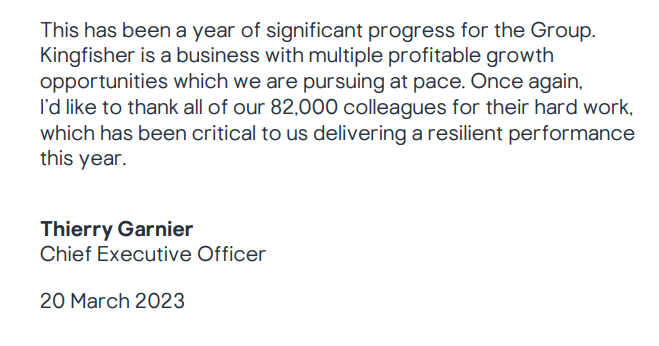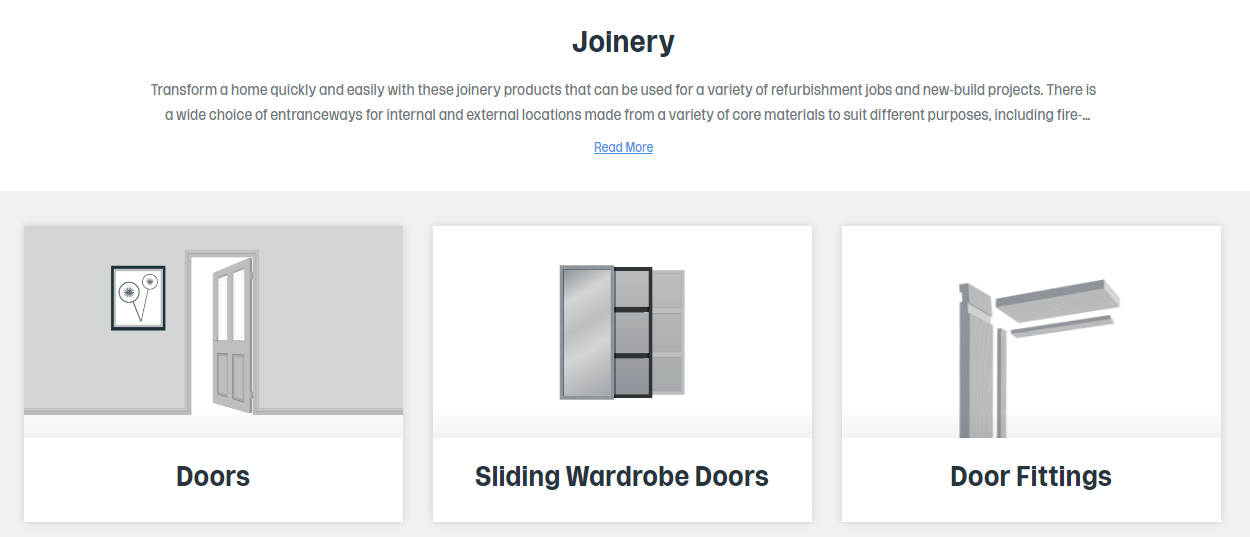01 单词
Kingfisher 零售咨询公司


foppish 浮夸的
featured foppish designer 性格张扬的设计师
dispense wisdom 传授智慧
medium-density fibreboard 中密度纤维板
impetus for 推动
refurbishment spending 翻新支出
Mintel 市场调研公司
Hygena 英国厨房品牌
Antipodean 新西兰人
dwindle 减少
Britons 不列颠人
02 翻译
1.大多数提升家装的项目都会被遗弃,在他们开始或者干到一半的时候,依据 Kingfisher 的老板 Veronique Laury 的说法。行业试图去重新发明,这样的意图本身并不成功。很多年来,提升家装意味着“自己动手”。英国人每个周末,鱼贯而入 DIY 商店,鉴于黄金时间的电视连续剧充斥着个性张扬的设计师传授着知识,关于如何装饰房间,以及用中密度纤维板组合书架。
knock together bookcase 组合书架
2.人口结构变化,消费模式改变,加剧的新竞争已然使得传统 DIY 超级商店看上去更加无关。两种主要的英国参与者,Kingfisher(翠鸟) B&Q 和 Homebase B&Q 力寻找正确的回应。Mintel 高级零售分析师 Thomas Slide 表示:“我们的研究表明,人们仍在花费在家庭装修上。主要运营商面临的问题是,大卖场模式被挤压,他们正在努力重塑它。”。他补充道:“这些商店的意义,它们在一个地方提供了大范围的展示。但互联网已经消除了这种需求。”
shifting demographic 人口结构变化
B&Q DIY商店。从文章信息看,属于装修的 DIY
big-box format 大卖场模式
demolish the need 消除了这种需求
3.翠鸟回应的其中一个点,由于“GoodHome 依赖于 B&Q,这是一种高端街道模式,Laury 女士希望它能开始“解决噩梦”,涉及令人困惑的选择,以及缺乏帮助和建议的噩梦。迷你店的概念将只储存6000条产品线,但第二天可以交付的数量是这个数字的四倍。B&0 商店也将有 GoodHome 区域。她说:“这个行业以前是围绕产品而不是项目组织的。几乎没有创新。我们已经确定了11个关键项目和400个客户维护,商店和网上的一切都是围绕完成项目和任务安排的。”GoodHome 的开业没有正式目标,但Laury女士承诺“我们将为客户提供我们需要的服务。”
customer mission 客户维护
someone pledged 某人承诺
4.这些变化与无帮助的背景对立,该背景下房屋所有权和房屋销售都在下降。据 Savills 称,屋主平均一生中平均搬 4-5 次家,在 1990 年代后期时候。这已经下降了不到 3 倍(之前平均搬家 12 - 15次)—— 这对于 DIY 零售商来说可是坏消息。因为搬家通常推动翻新支出。但是 Laury 女士是坚定的,她认为这并不是问题。“花在装修上的钱,已经20年没怎么变了,我向你保证。”她说。Damian McGloughlin 在 HomeBase 的 Laury 女士的交易对手,同意上述说法:“我并不认为 DIY 已经失去市场,这仍然是个增长的市场。但是非常分崩离析,你必须知道你将在哪一个部分发挥作用”。
backdrop 背景
an unhelpful backdrop of declining home ownership and home sales 无帮助的背景,该背景下房屋所有权和房屋销售都在下降
impetus for 推动
refurbishment spending 翻新支出
adament 坚定(n)
house improvement 提升房屋,即装修
5.Slide先生表示,装修支出仍在上升,2018年达到最高 20 亿。然而,基于该数据,这些专业零售商花钱所影响的市场(share),已然上升至 126 亿英镑。以及 Mintel 预计,将在 2021 年攀升至 140 亿英镑。很多房屋拥有者,现在更倾向于去雇佣零售商,而非自己装修。根据市场咨询公司 USP所述,1/3 的英国人说他们不喜欢干装饰的工作,以及正在使用“DIFM” —— 为我干活吧。装修手艺人不倾向于在 DIY 店里消费。他们直接从公司购买材料,例如 Howden Joinery,或者从 Screwfix 那购买 —— 这是一家关注手艺人的运营商,很多分析是认为这是 Kingfisher 最具吸引力的地方。
Howden Joinery

trade-focus 关注手艺人
tradesman 零售商,店主,手艺人。这里指的是装修团队,因为涉及 craftmanship,所以用 tradesman。
6.新进入者已经出现在其他地方。Wren Kitchens,由 Hygena 创始人在2009年成立的一家私人公司,现在拥有78家商店,年销售额近 25 亿。 B&M 或 The Range 会在基本品类的折扣上竞争。“DIY 模式的分水岭,是从两边开始往中间形成的。” Slide 先生说。作为回应,Kingfisher 已经关闭了60多家商店,并从西班牙和俄罗斯等市场上撤出。已经花费了过去的四年,几乎花去 8 亿英镑,试图统一其产品范围,削减成本并关注英国、法国和波兰业务(也可译为市场)。Travis Perkins 试图出售面向消费者的品牌 Wickes(著名 DIY 商店),以专注于以手艺人为中心的运营商(trade-focused operations, 谷歌翻译为“以贸易为中心的业务”)。Homebase 正在重新关注户外产品、装饰和软装,在被 Wesfarmers 控制的灾难般的18个月之后,(这期间)一家澳大利亚财阀,试图强行将新西兰人的产品,加诸于英国消费者身上。
shed 棚、库,分水岭
nibble at 蚕食
The DIY sheds are being nibbled from both ends. DIY 模式的分水岭,是从两边开始往中间形成的。
pull out of market 退出市场
unify the product range 同一其产品范围
is going back its roots in outdoor products 正在重新关注户外产品
7.此类举措的成功远未确保。 Megloughlin 先生接受了修复 Homebase 需要数年的时间。翠鸟股价比 2016 年低 20%,当时 Laury 女士承诺她的一个翠鸟计划将产生5亿英镑的额外利润,尽管这与法国运营的绩效不佳有关。Slide 先生说,对于 DIY 零售商来说,以新形式和服务瞄准,千禧租赁者和租贷人(leaseholder,不转移某种权利)是有意义的,而不是“追逐减少和老化房屋拥有者的人口”。但在会议室及厨房,卧室和浴室中,这项工作证明了比预期的更加困难和持久。
The success of such initiative is far from assured 这种举措的成功还远远不够 (百度翻译)
millennial renter 千禧一代的租赁者
leaseholder 租贷人
boardroom = meeting room 会议室
03 原文
1.Most home improvement projects are abandoned before they have even begun or halfway through, according to Kingfisher's boss Veronique Laury. The industry's attempts to reinvent itself have not been much more successful. For many years, home improvement meant “do it yourself, Britons flocked to DIY stores every weekend, while prime time television shows featured foppishryvtsdesigners dispensing wisdom on how to dress rooms or knock together bookcases using medium-density fibreboard.
2. But shifting demographics, changing consumption patterns and the rise of new competition have left thetraditional DIY superstore looking much less relevant. The two main UK players, Kingfisher-owned B&Q andHomebase have struggled to find the right response.“Our research shows that people are still spending on home dis on home improvements. The problem the main operators have got is that the big-box format is being squeezed and they are struggling to reinvent it,” said Thomas Slide, senior retail analyst at Mintel. “The point of these stores was that - they offered a huge range in one place. But the internet has demolished the need for that,” he added.
3. One part of Kingfisher's response, is “GoodHome by B&Q, a high street format that Ms Laury hoped would start to solve the nightmareof bewildering choice and lack of help and advice. The mini-store concept will stock just 6,000 product lines but have four times that number available for next-day delivery. There will also be GoodHome areas in B&0 stores. “The industry has previously been organised around products and not projects. There has been very little innovation. We have identified 11 key projects and 400 customer missions, and everything in store and on the web is arranged around completing projects and missions,” she said. There is no formal target for GoodHome openings, but Ms Laury pledged that “we will be where we need to be for the customer.”
4. The changes come against an unhelpful backdrop of declining home ownership and home sales. According to Savills, homeowners moved on average between four and five times during their lives in the late 1990s. That has since dropped to less than three times-bad news for DIY retailers, since moving house is often the impetus for refurbishment spending.But Ms Laury was adamant this was not the problem. “The amount spent on home improvements has been stable for 20 years and it will be stable for the next 20, I promise you,” she said. Damian McGloughlin, her counterpart at Homebase, agreed: “I don't believe that DIY is dead. It is still a growing market But it's very fragmented and you need to know which part you are going to play in.”
5. Mr Slide said spending on home improvements was still rising, topping 20bn in 2018. But within that, the hare accounted for by specialist retailers has risen to 12.6bn, and Mintel expected that to climb to more than 214bn by 2021.Many homeowners are now morelikely to hire tradesmen than attempt work themselves. According to USP, a marketing consultancy, almost a third of Brits said they disliked doing even decorative work and were turning instead to “DIPM”-do it for me. Tradespeople do not tend to shop at DIY stores. They buy from companies such as Howden Joinery, or from Screwfix-the trade-focused operation that many analysts regard as the most attractive bit of Kingfisher.
6. New entrants have emerged elsewhere.Wren Kitchens.a private company set up by the founder of Hygena in 2009,now has 78 stores and annual sales of almost 2500m. Discounters like B&M or The Range compete on basic items. “The DIY sheds are being nibbled from both ends.” said Mr Slide. In response, Kingfisher has shut more than 60 stores and pulled out of markets such as Spain and Russia. It has spent the past four years-and almost S800m-trying to unify its product ranges, cut its costs and focus on its UK. French and Polish businesses. Travis Perkins is trying to sell Wickes, consumer-facing brand, in order to concentrate on its trade-focused operations. Homebase is going back to its roots in outdoor products, decoration and soft furnishings after a disastrous 18 months in the hands of Wesfarmers, an Australian conglomerate that tried to impose an Antipodean product offering on British consumers.
7.The success of such initiatives is far from assured. Mr MeGloughlin accepted it would take years to fix Homebase. Kingfisher's share price is almost 20% lower than it was in 2016, when Ms Laury promised her One Kingfisher programme would yield $500m of extra profit-although that has much to do with the poor performance of its French operation. Mr Slide said it made sense for DIY retailers target millennial renters and leaseholders with new formats and services, rather than “chasing a dwindling and ageing population of homeowners.” But in boardrooms, as well as kitchens, bedrooms and bathrooms, the job is proving more diffcult and protracted than expected.


